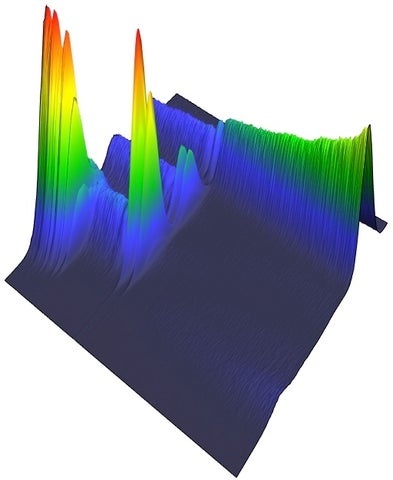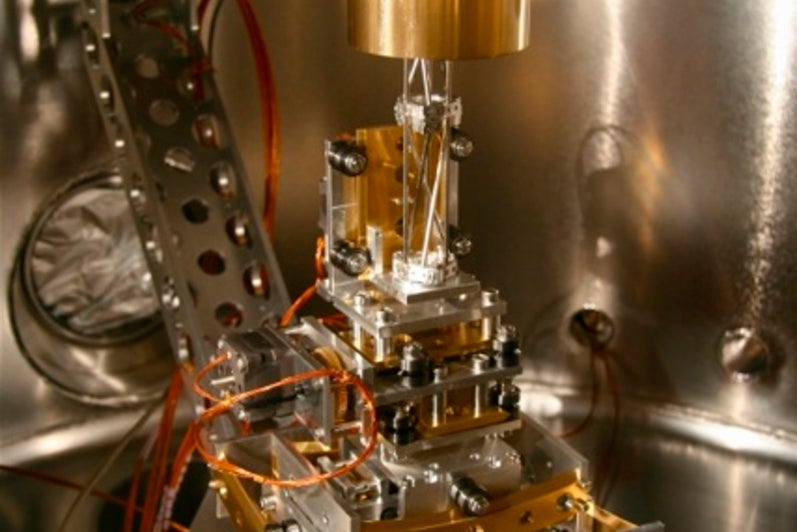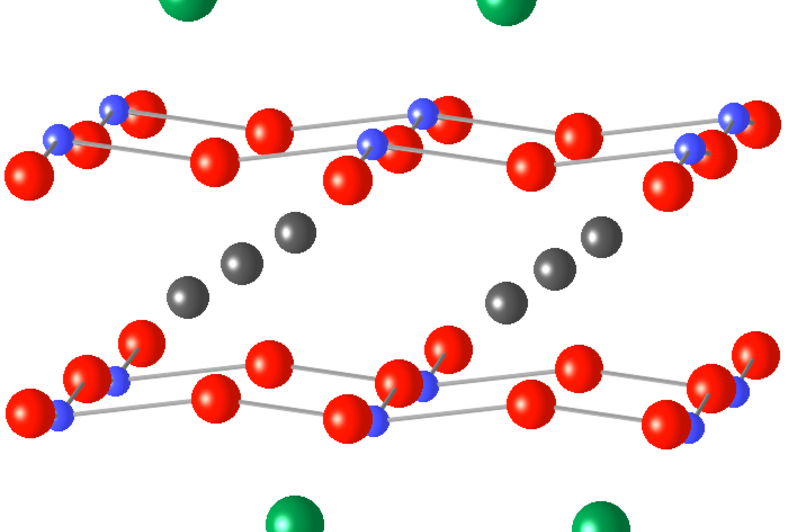Probing Spin, Charge and Orbital Ordering in Strongly Correlated Systems Using Resonant Soft X-Ray Scattering
Resonant x-ray scattering combines aspects of conventional x-ray scattering, which is sensitive to spatial order, with x-ray spectroscopy, which is sensitive to atomic species, valence, spin and orbital state. This combination allows one to probe very directly and in considerable detail a variety of exotic magnetic, charge, orbital or structural ordering phenomena. This technique is particularly useful in Quantum materials, where strong Coulomb interactions ultimately lead to a interesting and exotic phases of matter such as high temperature superconductivity or colossal magnetoresistance.
Along with the Sawatzky group at the University of British Columbia and the Canadian Light Source (CLS), we have built a beamline and endstation dedicated to resonant elastic soft x-ray scattering at the CLS in Saskatoon, Saskatchewan.
The resonant elastic scattering endstation is a state-of-the-art instrument for resonant soft x-ray scattering and is open to general user access at the CLS’s REIXS beamline.


Resonant Scattering in High tc Cuprate Superconductors
Cuprate superconductors have been widely studied since their discovery in 1987 due to their high superconducting transition temperature (Tc). Understanding the origin of their high Tc is one of the great mysteries in condensed matter physics. An important aspect of this problem is that the cuprates have a tendency to form novel spin and charge ordered phases that reside nearby or even co-exist with superconductivity. Elucidating the nature of these ordered states remains important to understanding the rich physics of the cuprates and making practical use of these materials.
This effort recently underwent a major advance due to the discovery of charge density wave order (CDW) in the cuprate superconductor YBa2Cu3O6+δ (YBCO) by resonant soft x-ray scattering (Science 337, 821 (2012)). These measurements indicate that density wave order is a generic feature of the cuprates. They also show important and unexpected features in YBCO that differ from CDW in other cuprates, such as a different periodicity to the CDW order and a clear competition with superconductivity.
Our group collaborated in this initial discovery and quickly performed follow-up measurements that clarified the correlation between density wave order and both the structure and level of disorder in the material. Perhaps most significantly, we also identified that the signature of the CDW order from resonant x-ray scattering is a spatial modulation of the Cu 2p to 3d transition energies in the CuO2 planes (Phys. Rev. Lett. 109, 167001 (2012)), a finding that follows from previous measurements of the “stripe” ordered cuprate La2-x-yNdySrxCuO4 (Phys. Rev. Lett. 110, 017001 (2013)).
Research into CDW order in the cuprates has been followed by our group to explore nematicity in the cuprates (Science 351, 576 (2016)), the orbital symmetry of CDW order (Nature Materials (2016)), the impact of oxygen disorder ( Phys. Rev. Lett. 113, 107002 (2014) ) and the nature of the competition of CDW with superconductivity (Science 343, 1336 (2014)).
Inverse Partial Fluorescence Yield
X-ray absorption spectroscopy is an indispensable tool in the determination of electronic structure and the study of materials spanning a wide range of disciplines. Our group has developed a new technique called inverse partial fluorescence yield (IPFY) that can be used to measure the x-ray absorption cross-section of materials. IPFY relies on the measurement of a non-resonant emission line which is achieved with the use of an energy-discriminating x-ray detector, such as a silicon-drift detector. This differs from the typical measures of x-ray absorption in ways that make it more suitable for studying the bulk properties of materials with strongly absorbing elements or those with poor surfaces. We highlight the capabilities of this technique in the following papers:
Physical Review B 83, 081106(R) (2011)
Scientific Reports 1, 182 (2011)

Energy-resolved x-ray fluorescence spectrum of NdGaO3

“> Ultra-high vacuum inverse photoemission instrument in our lab
Inverse Photoemission Spectroscopy
Our group has built an ultra-high vacuum system for the study of inverse photoemission spectroscopy. This technique is used to study the unoccupied states of materials. By exposing a material to a collimated beam of low energy electrons, the unoccupied states above the Fermi energy can be filled. These electrons quickly decay into lower-lying unoccupied states and release low energy photons that are detected by band-pass Geiger-Müller detectors. By varying the angle of the electron beam to the sample surface, it is possible to map the densities of unoccupied states and gain insight into the band structure of novel materials that cannot be achieved by means of normal photoemission experiments.


